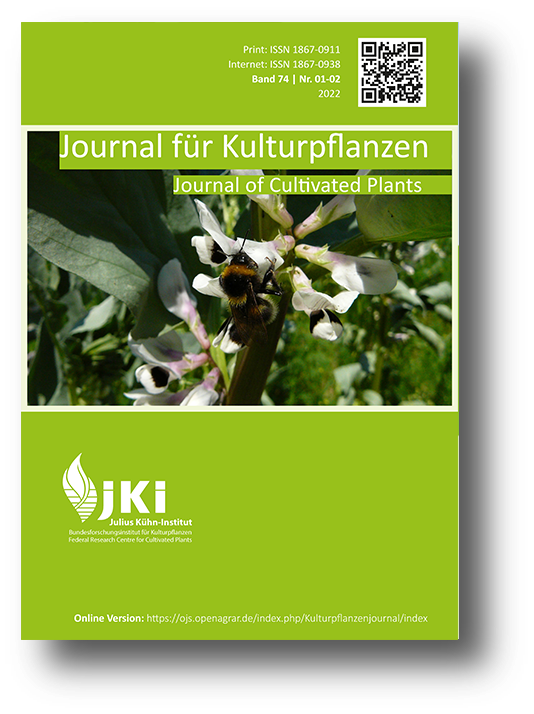NIRS for vicine and convicine content of faba bean seed allowed GWAS to prepare for marker-assisted adjustment of seed quality of German winter faba beans
DOI:
https://doi.org/10.5073/JfK.2022.01-02.01Keywords:
Faba bean, Vicia faba L., Vicine, Convicine, NIRS, GWAS, QTL, breeding researchAbstract
GWAS was applied to the antinutritive compounds vicine and convicine (V, C) in winter faba bean. V, C and V + C data for 189 inbred lines (five environments) were predicted by NIRS. These lines do not carry the strong “vc-“ allele (locus VC1). Lab data for 646 samples enabled our NIRS calibration, which performed well for V and V + C yet poor for C. Heritability was high (0.911; 0.868) for V and V + C and lower for C (0.737). From the 2542 mapped SNPs, 47 were significantly associated with V and one with V + C. Four SNPs mapped near to the VC1 locus and were significant for V. Seemingly, non-“vc-“ alleles at that locus contributed to V variation. Marker-assisted breeding with this germplasm can reduce the V + C content to about 0.44%, compared to the current lowest line with 0.55%. Further research will show inasmuch this can serve agronomy and breeding.
Published
Issue
Section
License
Copyright (c) 2022 Winda Puspitasari, Björn Allemann, Deepti Angra, Helen Appleyard, Wolfgang Ecke, Christian Möllers, Tanja Nolte, Randy W. Purves, Carsten Renner, Thomas Robertson-Shersby-Harvie, Rebecca Tacke, Alex Windhorst, Sonja Yaman, Wolfgang Link

This work is licensed under a Creative Commons Attribution 4.0 International License.
The content of the journal is licensed under the Creative Commons Attribution 4.0 License. Any user is free to share and adapt (remix, transform, build upon) the content as long as the original publication is attributed (authors, title, year, journal, issue, pages).
The copyright of the published work remains with the authors. The authors grant the Journal of Cultivated Plants, the Julius Kühn-Institut and the OpenAgrar repository the non-exclusive right to distribute and exploit the work.







